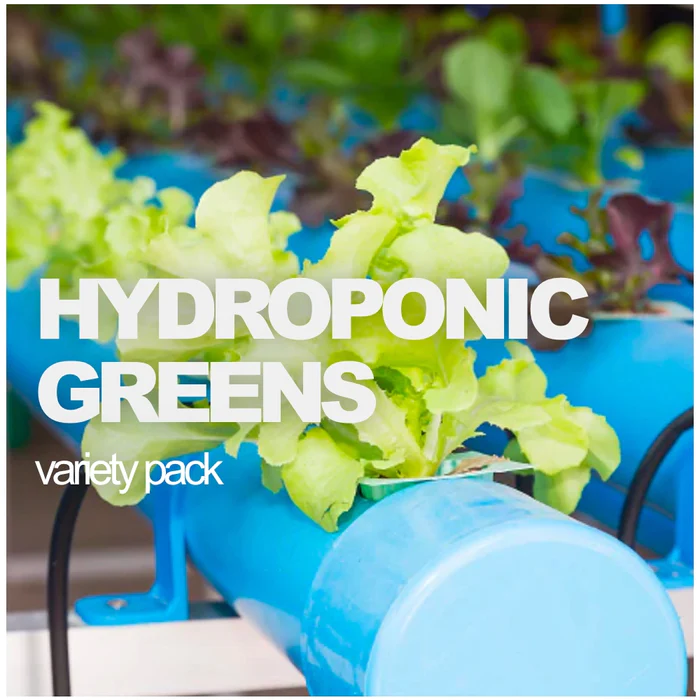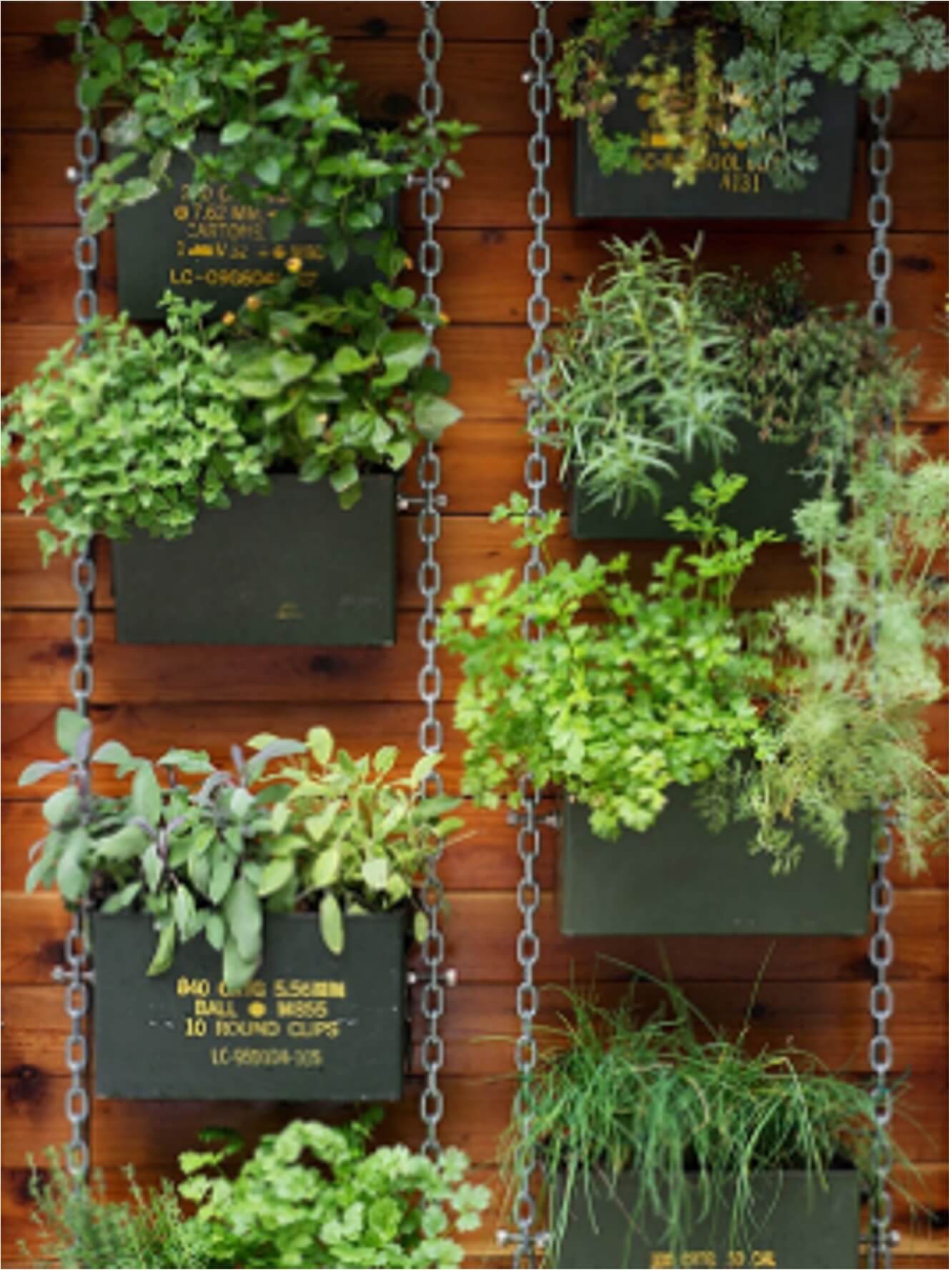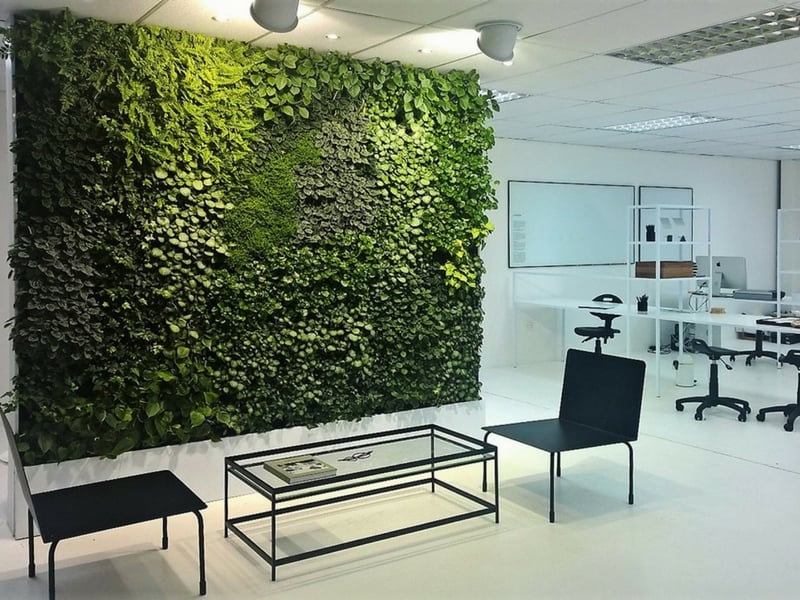Vertical Gardening for Beginners: Getting Started is a comprehensive guide that provides all the necessary information to kickstart your vertical gardening journey. This article covers everything you need to know, from the basics of vertical gardening to the essential tools and materials required for a successful setup. Whether you have a small balcony or a limited backyard space, this guide will teach you how to maximize vertical space and create a lush oasis of greenery. With step-by-step instructions and helpful tips, you’ll learn how to choose the right plants, create a sturdy support structure, and maintain your vertical garden for long-lasting beauty and enjoyment. Get ready to transform your living space into a stunning vertical garden with this beginner-friendly guide.
Choosing the Right Plants
When starting a vertical garden, one of the first considerations is choosing the right plants for your specific environment. This involves considering the climate of your area, assessing the lighting conditions, selecting plants with similar watering needs, starting with easy-to-grow plants, and considering the space available.
Consider the Climate
Different plants thrive in different climates, so it’s important to consider the climate of your area when selecting plants for your vertical garden. Some plants prefer hot and dry conditions, while others thrive in cool and moist environments. Researching the ideal climate for each plant will help ensure their success in your vertical garden.
Assess the Lighting Conditions
Next, it is essential to assess the lighting conditions of the area where you plan to set up your vertical garden. Some plants require full sun, while others can tolerate partial shade or even thrive in full shade. Knowing the amount of sunlight your vertical garden will receive throughout the day will help you choose plants that will thrive in those conditions.
Select Plants with Similar Watering Needs
Watering needs can vary greatly among different plant species. Some plants require frequent watering, while others prefer to dry out between waterings. When planning your vertical garden, it’s important to select plants with similar watering needs to ensure that all the plants in your garden receive proper hydration.
Start with Easy-to-Grow Plants
As a beginner, it’s always wise to start with easy-to-grow plants when venturing into vertical gardening. These plants are more forgiving and require less maintenance and care. By starting with plants that are known to be beginner-friendly, you can gain confidence and experience before expanding to more challenging plants.
Consider the Space Available
Lastly, consider the space available for your vertical garden. If you have a small balcony or limited wall space, you may need to choose plants that are suitable for compact gardens. On the other hand, if you have ample space, you can opt for larger plants that require more room to grow. Considering the space available will help you make the most of your vertical garden and create a visually pleasing display.
Determining the Location
Once you’ve chosen the right plants for your vertical garden, it’s time to determine the location where you’ll set up your garden. Several factors should be taken into account when selecting the location, including the amount of sunlight, wind exposure, access to water, weight-bearing capacity, and the aesthetics of the area.
Assess the Amount of Sunlight
Before setting up your vertical garden, assess how much sunlight the location receives throughout the day. Different plants have varying sunlight requirements, so it’s crucial to choose a spot that meets the needs of your selected plants. If possible, track the sunlight patterns in the area for a few days to determine if it receives enough sunlight for your plants to thrive.
Consider the Wind Exposure
Wind exposure can have a significant impact on the health and growth of plants in a vertical garden. Strong winds can damage plant foliage, stunt growth, and even uproot the plants. Assess the wind exposure in the area and take measures to protect your plants, such as using wind barriers or positioning your vertical garden in a more sheltered spot.
Evaluate Access to Water
Proximity to a water source is another important consideration when determining the location for your vertical garden. Plants need regular watering, so having easy access to water will make the maintenance of your garden much more convenient. If the location doesn’t have a nearby water source, consider setting up a watering system or choosing plants that require less frequent watering.
Check for Weight-Bearing Capacity
Vertical gardens can become heavy when fully established, especially if larger plants are included. Before installing your vertical garden, check the weight-bearing capacity of the chosen location. Make sure the wall or structure you plan to use can safely support the weight of the plants, containers, and other elements of your vertical garden.
Consider the Aesthetics
Finally, consider the aesthetics of the location. Your vertical garden should not only be functional but also visually appealing. Choose a location that complements the overall aesthetics of your outdoor space or home. Consider how the vertical garden will blend with its surroundings and enhance the visual appeal of the area.
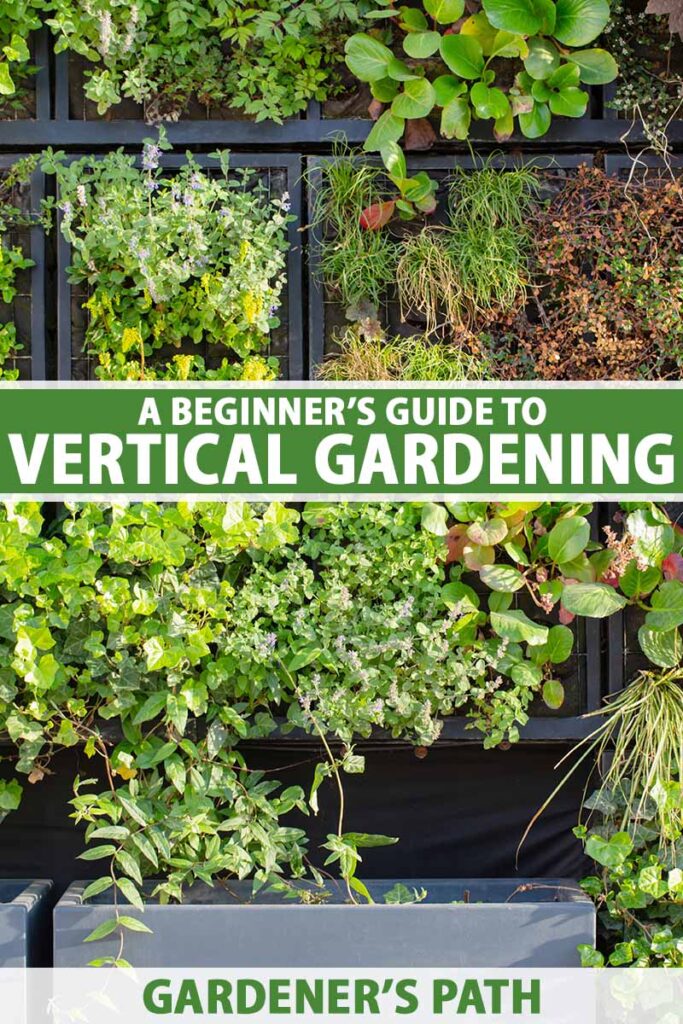
This image is property of gardenerspath.com.
Preparing the Vertical Garden
Once you have determined the location for your vertical garden, it’s time to prepare the area for planting. Proper preparation is crucial for the long-term success of your vertical garden. This involves choosing the right structure, preparing the wall or fence, installing the support system, creating adequate drainage, adding a layer of moisture barrier, and ensuring proper irrigation.
Choose the Right Structure
Selecting the right structure is essential for the stability and functionality of your vertical garden. There are various options to choose from, including trellises, freestanding structures, wall-mounted systems, and hanging containers. Consider the size of your plants, the available space, and the overall design aesthetic when choosing the structure for your vertical garden.
Prepare the Wall or Fence
If you plan to install your vertical garden on a wall or fence, it’s crucial to prepare the surface properly. Remove any dirt, debris, or loose paint from the wall. Repair any damaged areas and apply a fresh coat of paint, if desired. Ensuring a clean and stable surface will provide a solid foundation for your vertical garden.
Install the Support System
Once the wall or fence is prepared, it’s time to install the support system for your vertical garden. This can include hooks, brackets, or other hardware that will hold the containers or planters in place. Make sure the support system is securely attached to the wall or fence to prevent accidents or damage to your plants.
Create Adequate Drainage
Proper drainage is essential for the health of your plants. Ensure your containers or planters have drainage holes to allow excess water to escape. Additionally, consider placing a layer of gravel or small rocks at the bottom of the containers to further improve drainage. Adequate drainage will prevent waterlogging and root rot, promoting healthier plant growth.
Add a Layer of Moisture Barrier
To protect the wall or fence from moisture damage, add a layer of moisture barrier between the wall and your vertical garden. This can be a waterproof membrane, landscape fabric, or even a plastic sheet. The moisture barrier will prevent water from seeping into the wall and causing structural damage over time.
Ensure Proper Irrigation
Proper irrigation is crucial for the health and growth of your plants. Depending on the size and complexity of your vertical garden, you may consider installing an automated irrigation system or using drip irrigation. Regularly check the soil moisture levels and adjust your watering schedule accordingly to ensure that your plants receive adequate hydration.
Selecting the Right Soil and Containers
Choosing the right soil and containers is vital for the success of your vertical garden. Vertical gardens have unique requirements compared to traditional gardens, so it’s essential to consider factors such as lightweight potting mix, good drainage, container materials, the right container size, and modular systems.
Use Lightweight Potting Mix
Due to the vertical nature of the garden, it’s important to use a lightweight potting mix to prevent the containers from becoming too heavy. Traditional garden soil can be too dense and heavy for vertical gardening. Look for a potting mix specifically designed for container gardening, as these mixes are formulated to be lightweight while still providing adequate nutrients for your plants.
Ensure Good Drainage
Good drainage is crucial for preventing water buildup in the containers. Look for potting mixes that have excellent drainage properties or consider adding perlite or vermiculite to improve drainage. Additionally, make sure your containers have drainage holes to allow excess water to escape.
Consider Container Materials
The material of the containers can affect the health and growth of your plants. Plastic containers are lightweight and inexpensive, making them popular choices for vertical gardening. Terracotta and ceramic containers are aesthetically pleasing but can be heavier and more prone to cracking. Consider the pros and cons of different container materials before making your selection.
Choose the Right Container Size
The size of the containers is an important consideration when selecting the right containers for your vertical garden. Smaller containers may be suitable for smaller plants or herbs, while larger containers are needed for plants that require more root space or have a larger mature size. Ensure that the containers provide enough space for the root system to grow and that they can support the weight of the plant.
Consider Modular Systems
Modular systems are an excellent option for vertical gardening, especially for beginners. These systems comprise individual modules or pockets that can be easily attached to walls or structures. They provide flexibility in terms of arrangement and allow for easier maintenance and replanting. Consider modular systems if you want a versatile and adaptable vertical garden.
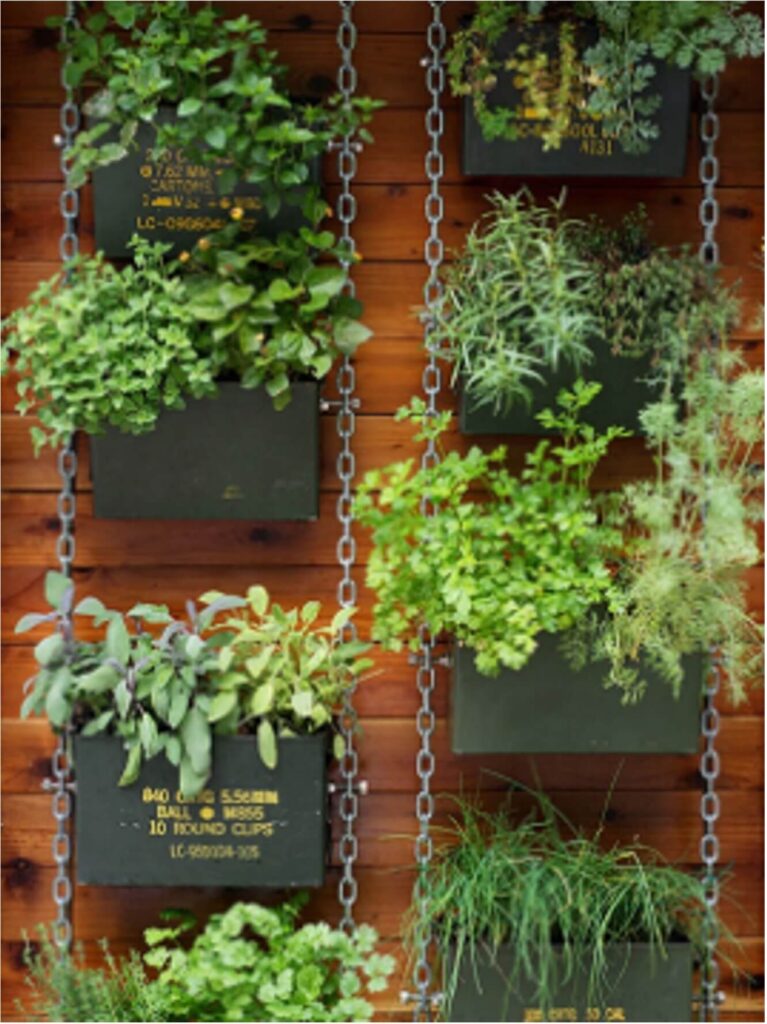
This image is property of memphisareamastergardeners.org.
Planting Techniques
Now that you have prepared your vertical garden and selected the right plants, it’s time to focus on planting techniques. Successful planting involves starting with seedlings or transplants, planting according to recommended spacing, ensuring proper plant orientation, following depth and orientation guidelines, and considering companion planting.
Start with Seedlings or Transplants
As a beginner, it’s recommended to start with seedlings or transplants instead of seeds. Seedlings or transplants are already established and have a higher chance of success compared to starting from seeds. Choose healthy and vigorous seedlings or transplants from a reputable nursery or garden center.
Plant According to Recommended Spacing
Each plant has specific spacing requirements for optimal growth. Follow the recommended spacing guidelines provided on the plant tags or seedling trays. Planting too closely can result in overcrowding, competition for resources, and increased vulnerability to diseases and pests. Proper spacing ensures that each plant has enough space to grow and flourish.
Ensure Proper Plant Orientation
When planting seedlings or transplants, it’s important to ensure the proper orientation of the plant. The root system should be positioned downward, while the foliage should face upward. Improper plant orientation can lead to poor growth or even death of the plant. Take care when handling the seedlings or transplants to avoid damaging the roots or foliage.
Follow Depth and Orientation Guidelines
Different plants have varying depth requirements when it comes to planting. Some plants prefer to be planted at the same depth as their nursery containers, while others require planting deeper to encourage root development. Research the specific planting guidelines for each plant and follow them closely to ensure proper growth and establishment.
Plant Companion Plants
Companion planting involves strategically pairing certain plants together for mutual benefits. Some plants repel pests, while others attract beneficial insects or improve soil health. Consider planting companion plants in your vertical garden to promote a more balanced ecosystem and enhance the health and productivity of your plants.
Caring for Your Vertical Garden
Proper care is essential to ensure the health and vitality of your vertical garden. This involves regular watering, fertilizing, pruning and trimming, pest control, and monitoring for diseases. By following these care practices, you can maintain a flourishing vertical garden year-round.
Watering
Regular and adequate watering is crucial for the success of your vertical garden. Monitor the moisture levels in the soil and water your plants whenever it feels dry. Remember that vertical gardens can dry out more quickly than traditional gardens, so be mindful of maintaining proper hydration for your plants.
Fertilizing
Vertical gardens may require additional nutrients due to the limited soil volume. Consider incorporating organic fertilizers or slow-release fertilizers into your care routine. Follow the recommended application rates and frequency for each fertilizer to avoid over-fertilization, which can harm your plants.
Pruning and Trimming
Regular pruning and trimming help maintain the shape, health, and appearance of your plants. Remove any dead or damaged foliage, and prune as necessary to control the size and encourage bushier growth. Pruning and trimming also improve airflow and reduce the risk of diseases in your vertical garden.
Pest Control
Pests can infest vertical gardens just like any other garden. Monitor your plants regularly for signs of pests such as aphids, mites, or caterpillars. Employ organic pest control methods whenever possible, such as introducing beneficial insects or using natural insecticides. Promptly address any pest issues to prevent them from spreading and causing damage to your plants.
Monitoring for Diseases
Diseases can pose a threat to the health of your vertical garden. Be vigilant and monitor your plants for any signs of fungal, bacterial, or viral diseases. Remove any infected plants or affected foliage to prevent the spread of disease. It’s also important to maintain proper airflow and avoid overwatering to reduce the risk of disease development.
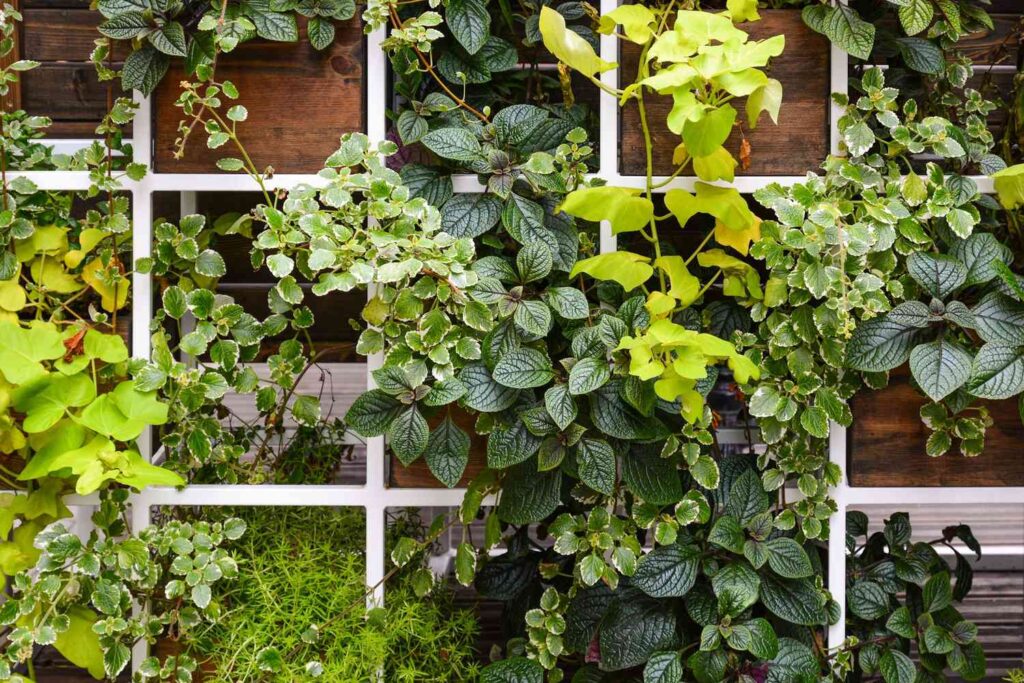
This image is property of www.marthastewart.com.
Training and Supporting Plants
Vertical gardens often involve plants that need support or training to grow and thrive vertically. Proper training and support ensure that your plants grow in the desired direction and achieve optimal growth. Consider installing trellises, stakes, or cages, tying and securing plants, supporting heavy fruit or vegetables, training vines or climbing plants, and pinching and pruning for shape.
Installing Trellises, Stakes, or Cages
Trellises, stakes, or cages provide support for plants that need to grow vertically. Install them early in the planting process or when the plants are still small to prevent damage to the root system. These structures help keep the plants upright, prevent them from sprawling, and create a visually appealing vertical display.
Tying and Securing Plants
As your plants grow, they may need to be tied or secured to prevent them from bending or toppling over. Use gentle and flexible ties, such as soft garden twine or plant clips, to avoid damaging the stems or branches. Regularly check the ties and adjust them as necessary to accommodate the growth of your plants.
Supporting Heavy Fruit or Vegetables
If you’re growing fruiting plants or vegetables in your vertical garden, they may require additional support to prevent the heavy produce from breaking the branches or stems. Use slings, nets, or other support systems to cradle the fruits or vegetables and distribute the weight evenly. Supporting heavy crops ensures that they develop properly and minimizes the risk of damage.
Training Vines or Climbing Plants
Vines and climbing plants add an enchanting element to any vertical garden. To encourage vertical growth and proper coverage, train these plants along trellises or other support structures. Gently guide the vines or tendrils in the desired direction, securing them as necessary. Regular training will help create a lush and captivating display.
Pinching and Pruning for Shape
Pinching and pruning are essential techniques for shaping and maintaining the appearance of your vertical garden. Pinch back the tips of the plants to encourage bushier growth and prevent them from becoming leggy. Prune any unwanted or excessive growth to maintain the desired shape and ensure that the plants thrive within the available space.
Harvesting and Using Produce
One of the most rewarding aspects of vertical gardening is being able to harvest and enjoy your homegrown produce. Understanding when to harvest, employing proper harvesting techniques, storing produce correctly, utilizing homegrown produce in recipes, and preserving surplus produce are all important aspects of making the most of your vertical garden’s bounty.
Knowing when to Harvest
Different plants have different signs of maturity and readiness for harvest. Research the specific indications for each plant, such as color change, firmness, or size, to determine the ideal time for harvest. Harvesting at the right time ensures that your produce is at its peak flavor and nutritional value.
Harvesting Techniques
Proper harvesting techniques are necessary to avoid damage to the plant and produce. Use sterilized pruning shears or scissors to cut fruits, vegetables, or herbs from the plant. Take care not to damage the surrounding foliage or stems. Harvest gently and handle the produce with care to prevent bruising or other damage.
Proper Storing of Produce
After harvesting, it’s essential to store your produce correctly to maintain its freshness and quality. Some fruits and vegetables need to be stored in a cool, dark place, while others require refrigeration. Research the specific guidelines for each plant and store your produce accordingly. Proper storage extends the shelf life of your harvest, allowing you to enjoy it for longer.
Utilizing Homegrown Produce
Vertical gardens offer a bountiful harvest of fresh, homegrown produce. Take advantage of your harvest by incorporating it into your everyday meals. Experiment with recipes that highlight the flavors and textures of your homegrown fruits, vegetables, and herbs. From salads to stir-fries to desserts, the possibilities are endless when it comes to utilizing your homegrown produce.
Preserving Surplus Produce
If you find yourself with an abundance of produce from your vertical garden, consider preserving the surplus for later use. Freezing, canning, or drying are popular methods of preserving fruits, vegetables, and herbs. By preserving your surplus produce, you can enjoy your vertical garden’s bounty even during seasons when fresh harvests are not available.
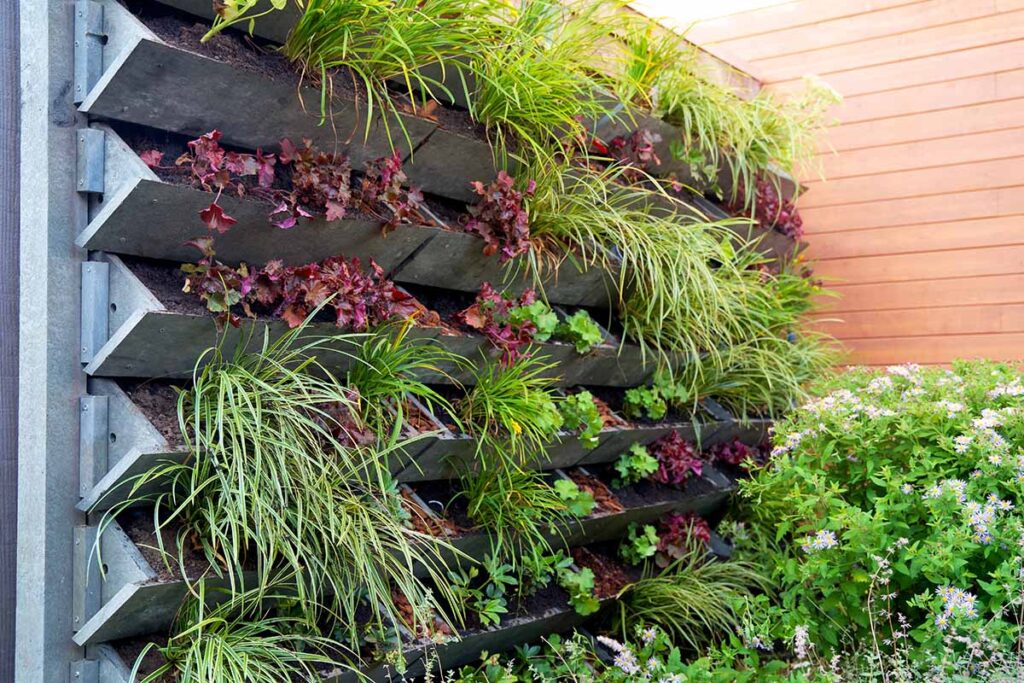
This image is property of gardenerspath.com.
Troubleshooting Common Issues
Despite your best efforts, vertical gardens can encounter common issues. By recognizing and addressing these issues promptly, you can safeguard the health and vitality of your plants. Keep an eye out for pests and diseases, address nutrient deficiencies, avoid over or underwatering, ensure proper drainage, and promote good air circulation to prevent common problems.
Pests and Diseases
Vertical gardens are not immune to pests and diseases. Monitor your plants regularly for signs of pests, such as chewed leaves, holes, or webbing. Also, watch for any discoloration, spots, or wilting that might indicate the presence of diseases. Promptly address any pest or disease issues to prevent them from spreading and causing significant damage.
Nutrient Deficiencies
Nutrient deficiencies can manifest as yellowing leaves, stunted growth, or poor fruit or flower production. Test your soil periodically to assess the nutrient levels. If deficiencies are detected, address them by supplementing with organic fertilizers or by adjusting the pH of the soil. Providing the right nutrients ensures that your plants remain healthy and productive.
Over or Underwatering
Achieving the proper balance of water in your vertical garden can be challenging. Overwatering can lead to root rot and nutrient leaching, while underwatering can cause wilting and stunted growth. Monitor the moisture levels of your soil and adjust your watering schedule accordingly. Aim for consistent and even moisture levels to avoid water-related issues.
Improper Drainage
Poor drainage is a common issue in vertical gardens and can lead to waterlogging, root rot, and other problems. Ensure that your containers have proper drainage holes and that the soil and potting mix allow excess water to escape. Additionally, consider the use of gravel or other materials at the bottom of the containers to further improve drainage.
Poor Air Circulation
Good air circulation is essential for preventing the buildup of humidity and reducing the risk of disease development. Avoid overcrowding your plants, as this can impede airflow. Regularly prune or thin out dense vegetation to promote better air circulation. Adequate spacing and proper pruning will help ensure healthier and happier plants.
Vertical Gardening Inspiration
Vertical gardening offers countless creative possibilities, even in limited spaces. Whether you have a small balcony, a courtyard, or a blank wall, there are numerous ways to transform your space into a vibrant vertical garden. Consider utilizing small spaces efficiently, creating a living wall, setting up a vertical herb garden, growing flowers and ornamentals, or exploring innovative vertical garden designs for endless inspiration.
Utilizing Small Spaces
Even the smallest of spaces can be transformed into a thriving vertical garden. Use hanging baskets, wall-mounted planters, or tiered shelves to maximize your vertical space. Utilize the walls, fences, or overlooked corners to grow herbs, flowers, or compact vegetables. With creativity and careful planning, small spaces can become lush and inviting vertical gardens.
Creating a Living Wall
Living walls, also known as green walls, are vertical gardens that cover entire walls or sections of walls. They provide a stunning visual display and bring the beauty of nature into any space. Living walls can be created using a variety of plants, including ferns, succulents, and cascading vines. Consider installing a living wall to create a striking focal point in your outdoor or indoor environment.
Vertical Herb Gardens
Vertical herb gardens are a practical and convenient way to grow fresh herbs. Utilize vertical space by installing wall-mounted herb planters or using vertical hydroponic systems. Herbs such as basil, rosemary, and thyme thrive in vertical gardens and can be easily harvested for use in cooking and teas. Vertical herb gardens provide easy access to fresh flavors right at your fingertips.
Growing Flowers and Ornamentals
Vertical gardening is not limited to edible plants; it’s also a fantastic way to display flowers and ornamentals. Brighten up your vertical garden with a variety of colorful flowers, cascading vines, and ornamental grasses. Vertical structures such as trellises or archways can add height and drama to your garden, creating a stunning display of nature’s beauty.
Innovative Vertical Garden Designs
For those seeking a unique and visually impressive vertical garden, exploring innovative designs is a must. From vertical gardens integrated into furniture and architectural features to large-scale installations, there are endless possibilities for creating a memorable and artistic vertical garden. Let your imagination run wild and experiment with unconventional ideas to create a one-of-a-kind vertical garden.
Vertical gardening opens up a world of possibilities for growing plants in limited spaces. By considering the right plants, determining the location, preparing the vertical garden, selecting the right soil and containers, employing proper planting techniques, caring for your garden, training and supporting your plants, harvesting and utilizing produce, troubleshooting common issues, and seeking inspiration, you’ll be well on your way to creating a thriving and beautiful vertical garden. So grab your tools, get creative, and enjoy the beauty of your very own vertical garden!
